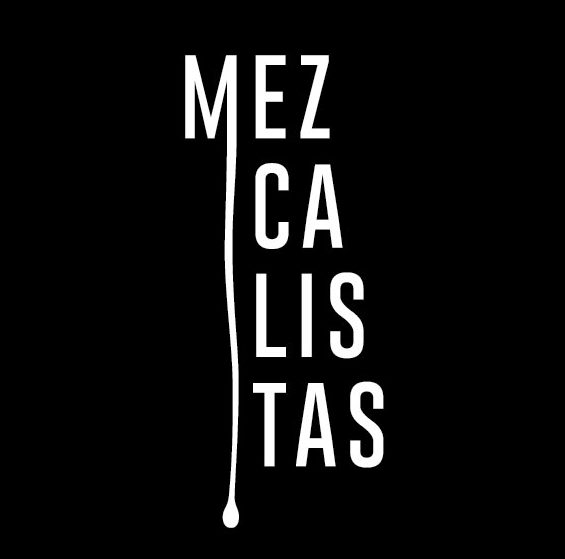In this detailed guide, we cover how mezcal is made, where mezcal is made, what mezcal is made from, and makes mezcal different from tequila, as well as your more obscure questions about the category.
Updated March 2025
What is mezcal? A seemingly simple question that really isn’t.
The world of mezcal has come a long way since we launched Mezcalistas in 2012. For one thing, a lot more people are drinking agave spirits today and mezcal tourism is still on the rise. We were getting awfully tired of reading these ill-informed “tequila’s smoky cousin” articles, so we figured that we’d write the mezcal guide to end all mezcal guides. Whether you have a basic question (What is the difference betwen mezcal and tequila?) or something more advanced (What is an ensamble?), we’re here for all your agave spirits questions.
Below we break out key terms, briefly explore the history of agave spirits, explain how mezcal and tequila are different, discuss agave types, and guide you through production. For further information and to stay up to date on mezcal events, we encourage folks to sign up for our newsletter or check out our Mezcal Encyclopedia, where you can get geekier with key terms–from abocado to viñaza.
What is mezcal?
Colloquially, mezcal means any spirit distilled from the agave plant. The word mezcal comes from the Nahuatl word mexcalli, which means cooked agave and is derived from the Nahuatl words metl (agave) and ixcalli (cooked). People have been making mezcal in Mexico since at least the Spanish conquest, potentially earlier. Like wine, mezcal is traditionally a broad term, so you’d think it would be easy to define mezcal. But legally, it’s a different story. Read on.
Where is mezcal made?
In most of Mexico’s 31 states, someone is making a spirit from the agave plant and calling it mezcal. But mezcal can only legally labeled as mezcal in ten states. Since 1997, Mexico’s Denominacion de Origen de Mezcal (DO or DOM) has defined which regions can legally produce and sell a product labeled as mezcal, which also must certified by a mezcal regulatory organization. The geography of the DO changes regularly, so we should view this recent definition as highly elastic. We expect the regulatory structure to welcome new states in the coming years. For now, mezcal can be certified in Oaxaca, Michoacan, Puebla, Guerrero, Zacatecas, Guanajuato, Tamaulipas, San Luis Potosi, Durango, and Sinaloa. Oaxaca produces around 80% of the mezcal available on the international market.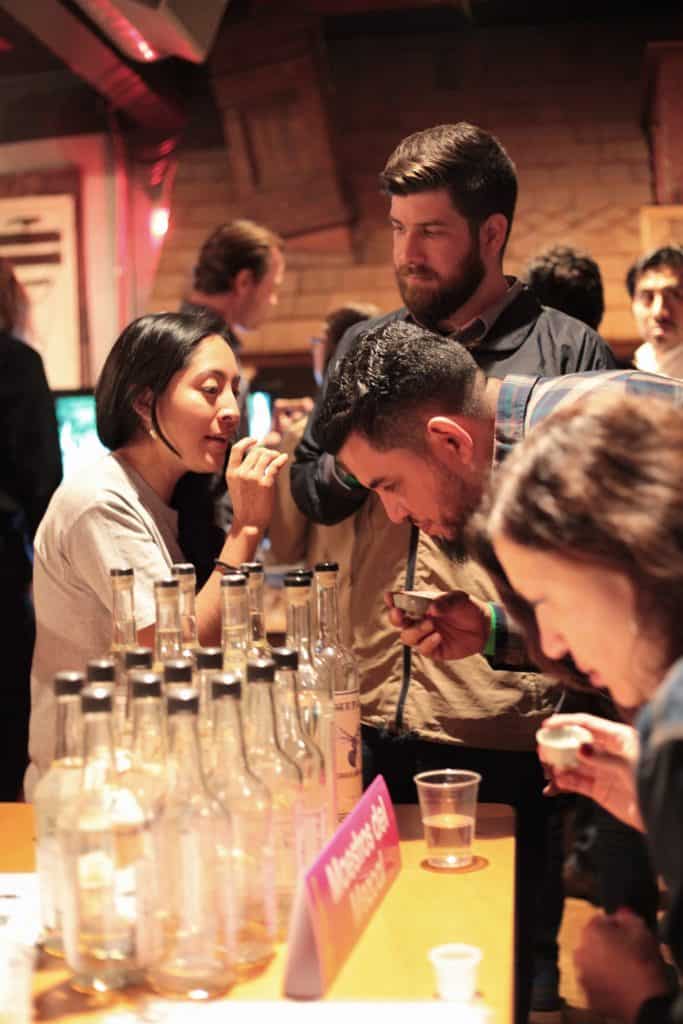
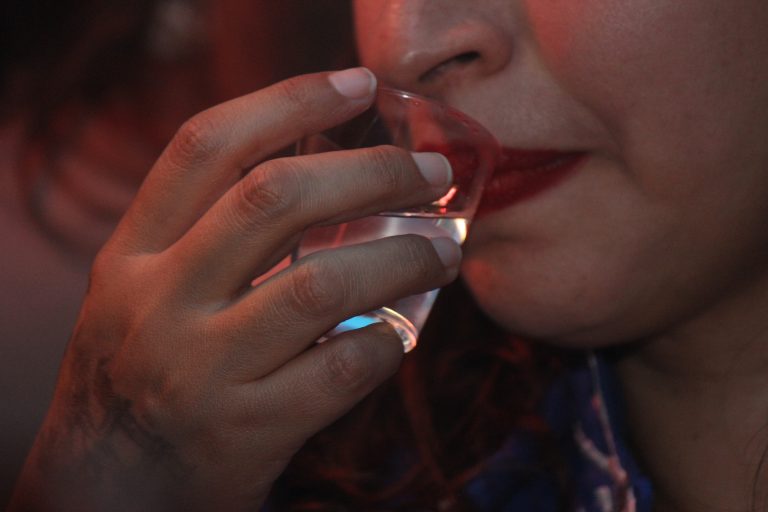
What is the difference between tequila and mezcal?
Tequila is a type of mezcal with an extremely well-defined sense of itself. So why is tequila called tequila? People have been making mezcal in the Tequila region of Jalisco since the 1600s. The industry developed in the nineteenth century, and the mezcal from that region grew so famous that it became known simply as “tequila.” As demand increased, so did volume and the process was industrialized. Tequila gained prominence and name recognition in the early twentieth century, but really developed into an economic powerhouse in the 70s and 80s. These days, tequila can legally only be made from a single type of agave (blue agave or Agave tequilana weber), in parts of five Mexican states, and according to a certain methods.
While agave for mezcal is typically cooked in pits or wood-fired ovens, agave for tequila may be roasted in brick ovens or steamed in stainless steel autoclaves. Some companies don’t cook the agave at all, but instead use a diffusor, which is a machine that extracts carbohydrates from raw agave. Most afficianados look down on diffusor tequila. While all certified mezcal is 100% agave, there are two primary types of tequila: 100% agave tequila and “mixto” tequila, which may be derived from 51% agave sugar, augmented by other sugars, including high-fructose corn syrup. In contrast with mezcal, barrel aging is a common practice in the tequila industry, which has five classes: blanco, gold, reposado, añejo, and extra añejo. These last three classes are aged tequilas. “Gold” may be a blanco mixed with an aged tequila, but it is usually just an unaged mixto with some yummy additives to give it that characteristic sweetness and yellow tint. Today tequila is a massive industry in Mexico and margaritas are the world’s best selling cocktail.
For a deeper look at the differences of tequila vs mezcal, check out this breakdown.

How is mezcal made?
In this section of our guide, we’ll look at how agave is harvested, roasted, crushed, fermented into mosto, and then, finally, distilled into mezcal.
How is agave harvested?
After an agave has reached maturity, its pencas, or leaves, are removed from the piña, or heart of the agave. These trimmed agaves are often left in the field for a few days before being removed to the distillery. Mezcal distilleries are called palenques in Oaxaca, but may be known as vinatas or tabernas in other regions.


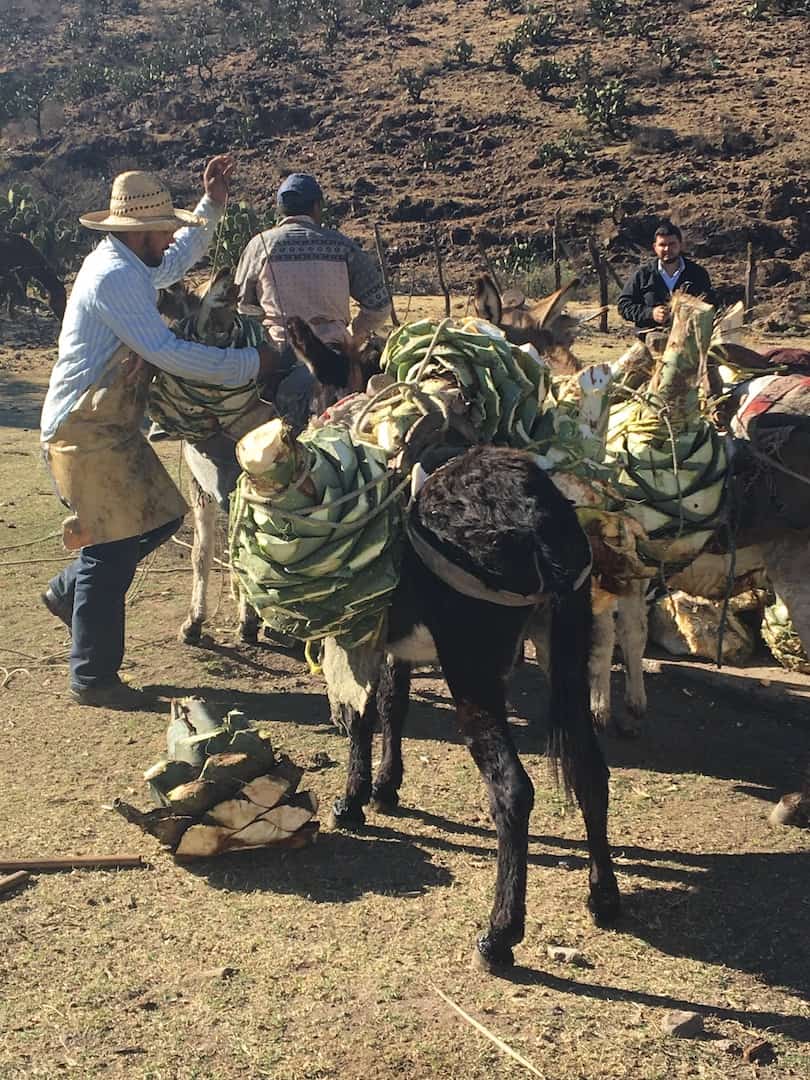
How do you roast agave?
The most common way to roast agave is in an earthen pit oven. These pits are usually lined with rock and then fired by wood and more rocks, which enable a slow roast. The piñas are then piled into the oven, and covered with leaves, dirt, and cloth to seal in the heat. Sometimes the piñas are cooked above ground in brick ovens heated by wood, gas, or steam – this method is more prevalent in Durango, San Luis Potosi, Guanajuato, and Zacatecas. In more industrial distilleries, agave may be steamed in stainless steel ovens called autoclaves. This is the predominant method used in the production of tequila.


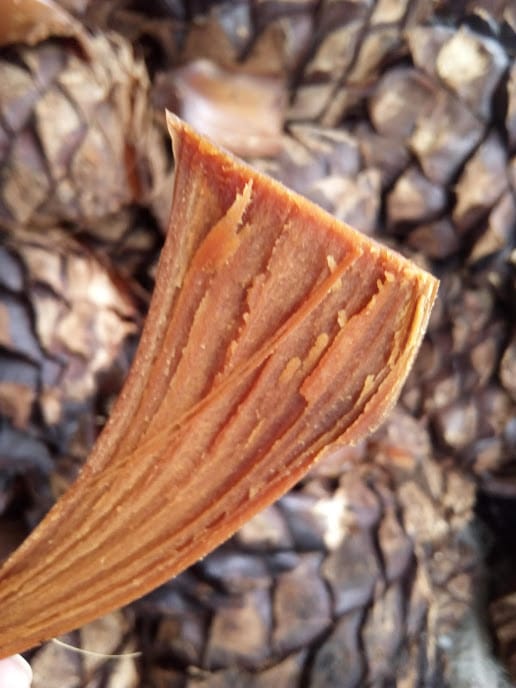
How is agave crushed?
After the agave has been roasted, it’s ready to be crushed in one of three ways: by hand using wood mallets (often in a canoa); by a tahona, or stone wheel pulled by a horse, donkey or tractor; or by a mechanical shredder. The cooked agave is crushed in order to release juice and sugars.
How is agave fermented?
The crushed agave fiber is put into fermentation tanks made of wood, stone, steel, or sometimes even animal hide. Water is typically added at some point, and then the agave fiber is left in an open-air environment so that wild yeasts in the air can kick-start the fermentation process. Fermentation takes anywhere from three days to a week depending once again on the climate and is “where the magic happens” in determining the complex flavors for the final product. For more on fermentation, check out this article on how different types of fermenation tanks may influence the flavor of mezcal.
In areas outside of Oaxaca, there are variations on this fermentation process. With mezcal from San Luis Potosi and Durango, producers commonly use only the agave juice from the crush for fermentation. Because of the temperature variations in those states, they may not rely on wild yeast to kickstart the fermentation process, instead using pulque as the starter.
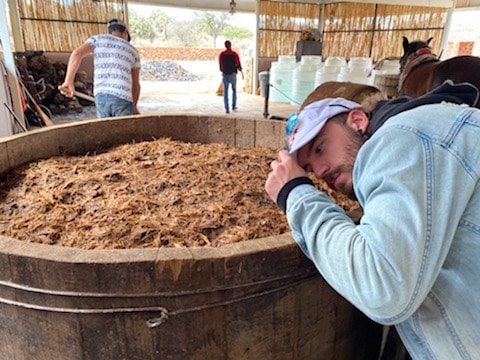

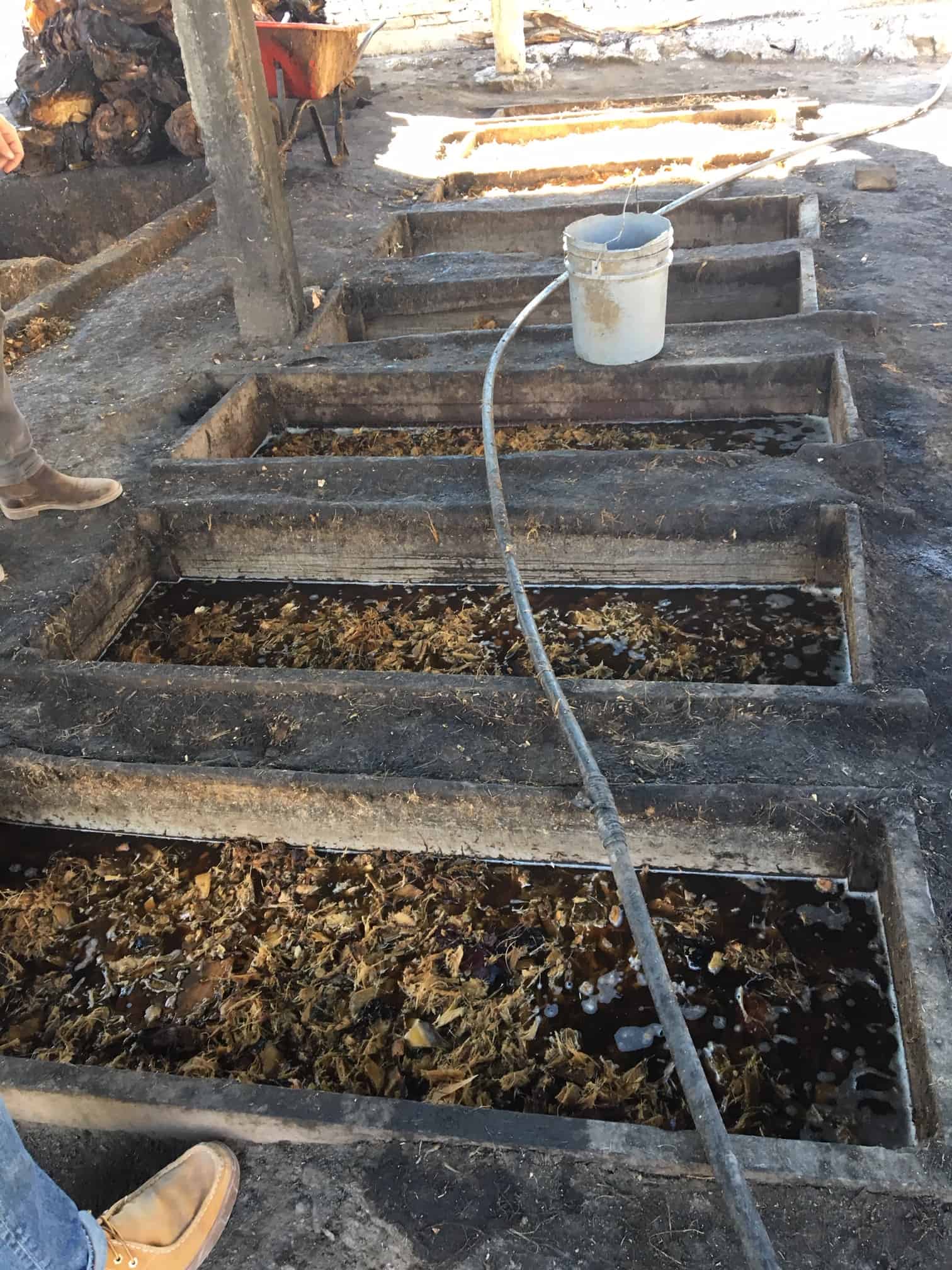
How is mezcal distilled?
The agave mash is next transported to the stills, which can be made of copper, clay, wood, or stainless steel and are typically fired by wood, though some brands have been transitioning to natural gas for environmental reasons. In a nutshell, distillation is the process of separating components or substances from a liquid mixture by using a mix of boiling and condensation. In the case of spirits, you are essentially separating the ethanol from whatever else is in the fermented must or mosto. This process is not 100% efficient, as the final product is a mix of ethanol, water, and other congeners (chemicals other than ethanol that are formed during fermentation). Relative to other spirits, mezcal has a high level of congeners, which helps explain the elevated complexity and breadth of aromas and flavors.


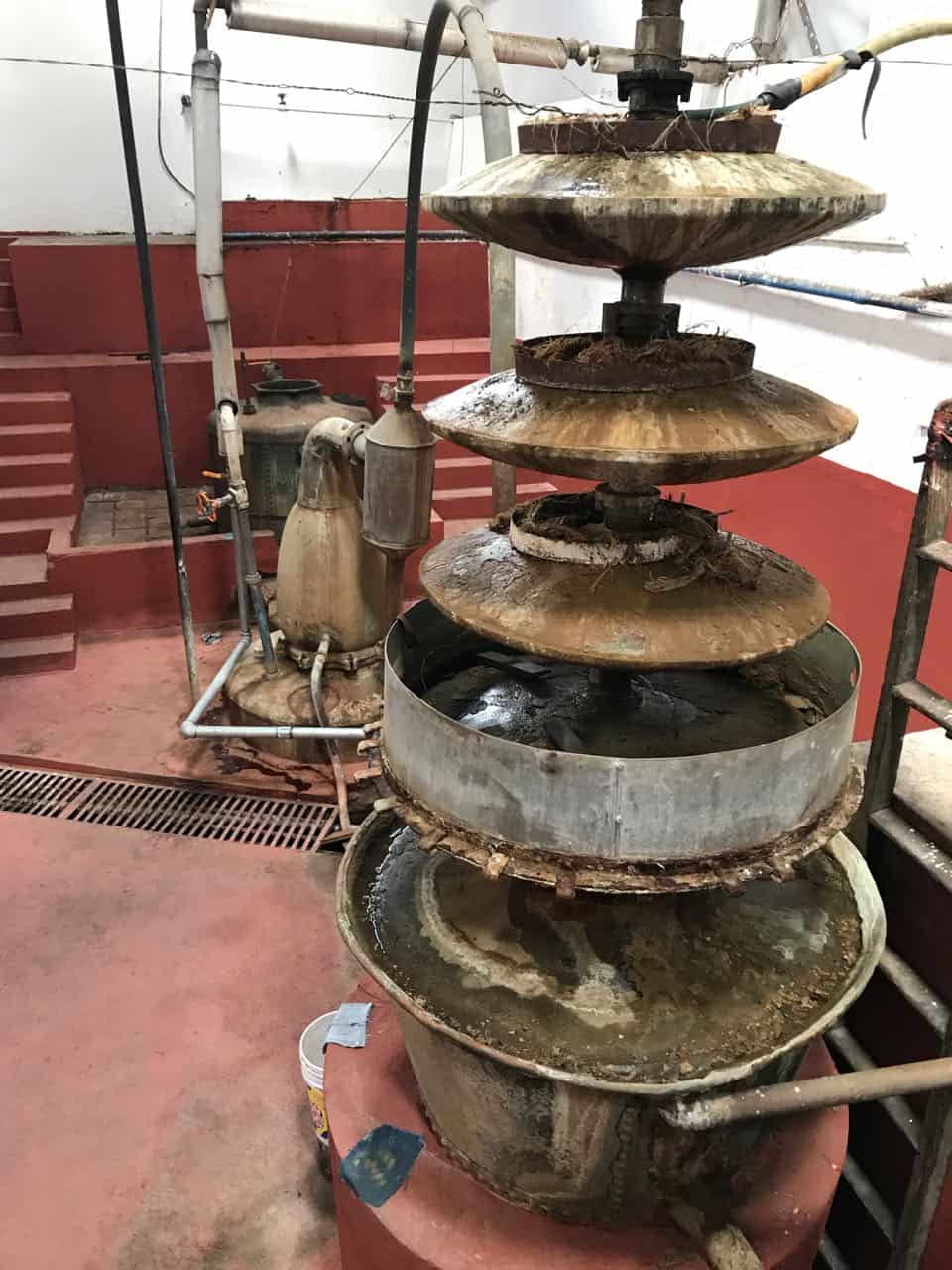

Mezcal FAQs
What makes mezcal so special?
It’s the agave. No other liquor has the same base and agave is a singular plant. It’s totally different from anything else humans cultivate, and its complexity and long life cycle make it truly extraordinary. The plant is sacred in Mexico, which is home to around 75% of the world’s agave varieties. To learn more about the origin myth of agave in Mexico, check out the story of Mayahuel.
Let’s get back to the long life cycle. If you want to make whiskey, you get grain, soak it, ferment, it, distill it. If you want to make more whiskey, you get more grain. You can grow multiple crops of grain annually. It grows in a wide variety of places and it has a predictable growth cycle. The same story is true of other types of liquor: corn = bourbon, sugarcane = aguardiente and rum, grapes = cognac, grappa, and many other spirits; other fruit = eau de vie. All these plants produce annually.
Agaves take a minimum of four years to mature, usually more in the range of 8-10 years. And once you harvest agave, you kill the plant. Yup, you heard me right. Agave is not like a grape vine that will keep producing. You have to start all over again and spend another decade before a plant is ready for harvest. In order to consistently make mezcal, producers need to plan far in advance, and it’s extremely challenging to predict supply and demand. For this reason, agave farming can be boom and bust.
Is mezcal regulated?
The government of Mexico owns the word mezcal and oversees the development of the rules and regulations that surround it which are called Norma Official Mexicana or Normas or NOMs. NOM-70 is the regulation that dictates how the spirit can be made and categorized. In the past, only one non-governmental organization called the Consejo Regulador del Mezcal (COMERCAM or CRM) was tasked with overseeing the rules and certifying mezcal, but that has changed in the past few years. There are now five organizations that have been granted the power to regulate, certify and issue the necessary paperwork for labeling and exporting the liquor.
Is all mezcal 100% agave?
Legally, yes. Any properly certified mezcal is made from 100% agave sugars.
What’s the deal with the worm in the bottle?
While worms do live in agave roots and are an intrinsic part of some Mexican cuisine, the worm can be dated back to a marketing campaign that began in the 1940s. Someone had the brilliant idea of putting a worm, or gusano, in a bottle to distinguish their mezcal on the liquor store shelf, and that little marketing twist came to define mezcal for North Americans. The brand Gusano Rojo because hugely popular, but also gave the international market a very limited definition of mezcal. Some mezcals with worms have a wonderfully savory flavor, but they aren’t intrinsic to the spirit. Nor are they hallucinogenic. So get that idea out of your head as well.
If you’ve had gusanos, it has most likely been in a sal de gusano, accompanied by orange slices. Dried and then ground with chile, salt and lime, it packs an umami punch and makes for a great “secret” ingredient in cooking and cocktail making. The dried gusano has an intense flavor that can be overwhelming for people trying it for the first time. But why is the gusano paired with mezcal? In fact, it lives in the agave, mostly on the pencas and is just one of the many creatures that finds shelter, and food, from the agave. Other agave residents or frequent visitors include rabbits, foxes, bats, birds (hummingbirds and bats), and butterflies. An agave is a little ecosystem unto itself, and the worms are part of a healthy, symbiotic relationship.
Is all mezcal smoky?

Inherently, smoke is a part of mezcal due to the production process, which, in many cases, hasn’t changed much for hundreds of years. Traditionally, agave is roasted underground in pits above smoking coals. And that’s why the spirit can have a smoky, or roasted, flavor. However, mezcals don’t have to be smoky, and the best mezcal won’t overpower you with smoke. Drinking agave spirits isn’t a wrestling match. Some North American brands think that a smoky flavor is what sells their bottles, but traditional mezcal distillers may actually look down on an overly smoky expression. So don’t let the assumption that this liquor should be smokey get in the way of enjoying a good mezcal.
How many types of agave can be used to make mezcal?
These types of numbers are hard to verify, but it seems that around 40 types of agave are used to make mezcal.
What are the different types of mezcal?
The main ways of distinguishing mezcals are by types of agave and where the liquor is produced. Oaxaca produces most mezcal and most of that is made from a single agave called espadín. So, most of what you’ll find will be Oaxacan espadín. But there are a wide variety of agaves from Oaxaca, including types of agave karwinskii, agave marmorata, and tobala. Mezcal from Michoacan and Guerrero is most commonly made from cupreata. Much of the mezcal in Durango is made from an agave called duranguese (of course!)
Just to add a bit more complexity to the topic, there are a few other DOs for related Mexican spirits: raicilla, bacanora, and sotol. What is raicilla and where is raicilla made? Like tequila, raicilla is a type of mezcal made in the state of Jalisco, which falls outside of the DO for Mezcal. Unlike tequila, raicilla tends to made from numerous types of agave using rustic processes similar to other mezcals. For more information, check out our raicilla guide. What is bacanora and where is bacanora made? Bacanora is a mezcal made in the state of Sonora. To learn more about the types of agave used to make bacanora, how bacanora is made, and other pertinent questions, check out Bacanora 101.
What is sotal and where is it made? Is sotol actually a mezcal? Not exactly. Sotol isn’t made from the agave plant but rather from Dasylirion wheeleri, commonly called desert spoon. However, the production process is similar to mezcal and the liquor can taste similar, so the categories are sometimes lumped together. The DO for sotol includes the states of Chihuahua, Coahuila, and Durango.
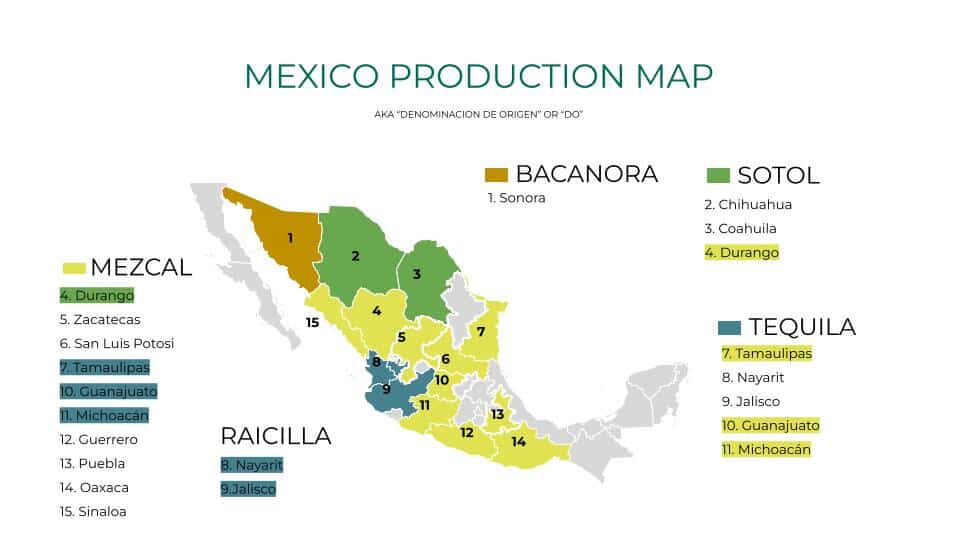
Why is mezcal so hot right now?
Everyone has a theory but the easiest answers are: It’s relatively new. Mezcal has only been widely available in North America for the past decade. The spirit is strange, varied, and distinct. When sipping mezcal, you can sit around playing the adjective game for hours. Does it taste like citrus, floral notes, the barn yard, or burnt tires? If you’re a bartender, you can base a cocktail on mezcal and deploy that depth and variety of flavor in your favor. People love the story behind mezcal: Much of the spirit is still handmade in tiny distilleries with dirt floors. The people who make it were taught by their fathers who learned it from their fathers and so on. The entire process remains deeply ingrained in traditional Mexican cultures and varies by location. You can’t get much more artisinal than an old-fashioned mezcal. The spirit resonates with our obsession with artisinal production methods.
Where can I find and taste the best mezcal?
Find a local mezcal bar and order a flight. See if they’ll give you quarter-ounce pours because mezcal has a high ABV: usually 45-50% alcohol. You don’t need a whole shot to get a good sense of whether you like something. Drinking several different mezcals side-by-side will give you an instant comparative sense of your preferences. Check out our mezcal guide for an extensive list of mezcals available in the US. Once you find something you like, pursue mezcals by the same brand or distiller. We have a map of the best mezcal bars that is always expanding. And finally, when you’re ready to start buying bottles, be sure to check out our list of retailers across the US that carry a good selection of mezcals.
Also, read our mezcal reviews and try to check out Mexico in a Bottle, our flagship mezcal tasting event!

